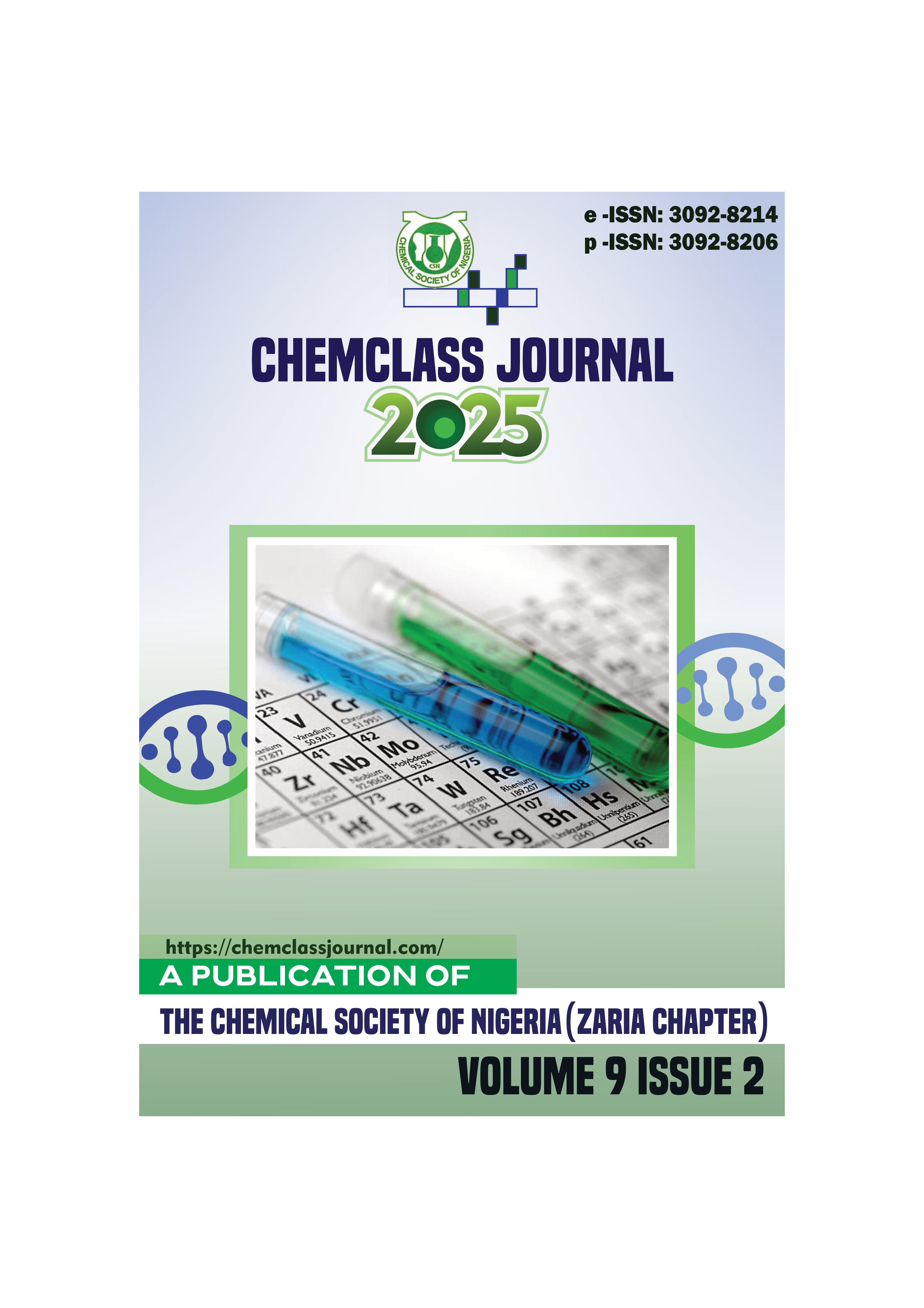Quality Evaluation of Commercial Honeys Obtained from Northwestern States of Nigeria by Proximate Composition Analysis
DOI:
https://doi.org/10.33003/chemclass-2025-0901/146Keywords:
Adulteration , proximate composition , honey , beekeepersAbstract
Natural, honey belongs to a group of the most adulterated products globally. Honey adulteration is a global
concern, it has negative effects on the nutrition and health of final consumers. Adulteration of honey has
become a common practice because of the high demand and limited availability of the product. This
research aims to detect adulteration in commercial honeys by comparing the proximate compositions of the
samples obtained from local sellers and known beekeepers (as control) in Northwest states of Nigeria. The
samples were collected from seven North-Western states of Nigeria, prepared and analyzed using standard
analytical methods. The results obtained in the honey samples revealed that the honey from Jigawa State
showed the highest moisture content (29.22%) while those from Kebbi State showed the least (20.25%) and
was 16.60% for the samples obtained from beekeepers. The ash content ranged from 0.59% to 1.00% in the
samples from Zamfara and Kaduna states respectively and was 0.37% for the control samples. Samples
from Sokoto State showed the highest crude fat (3.21%) which is significantly different from the least
(1.64%) obtained from Zamfara State and was 0.24% from the beekeepers. There was no significant
difference (P>0.05) between the protein contents in the control samples (0.38%) and the highest values
obtained from Jigawa state (0.40%); while the least protein contents were observed in Zamfara samples
(0.12%) and differs significantly. Zamfara honeys had the highest carbohydrate contents (77.31%) and do
not differ significantly (P > 0.05) from the control samples (82.45%), while the least content was observed
in Jigawa samples (66.83%) and differs significantly (P<0.05). The crude fiber was found to be 0.07% in
Zamfara samples which do not substantially differ compared to the control (0.03%) but differs significantly
with the highest value (0.40%) obtained from Jigawa state. Generally, the results from this study indicate
that large percentage of the honey products sold locally in the Northwestern Nigeria are suspected to be
adulterated. Based on this finding, there is need for campaign to sensitize honey sellers on the importance
of maintaining the quality of natural honey product particularly for health and economic relevance.





 ChemClass Journal
ChemClass Journal
